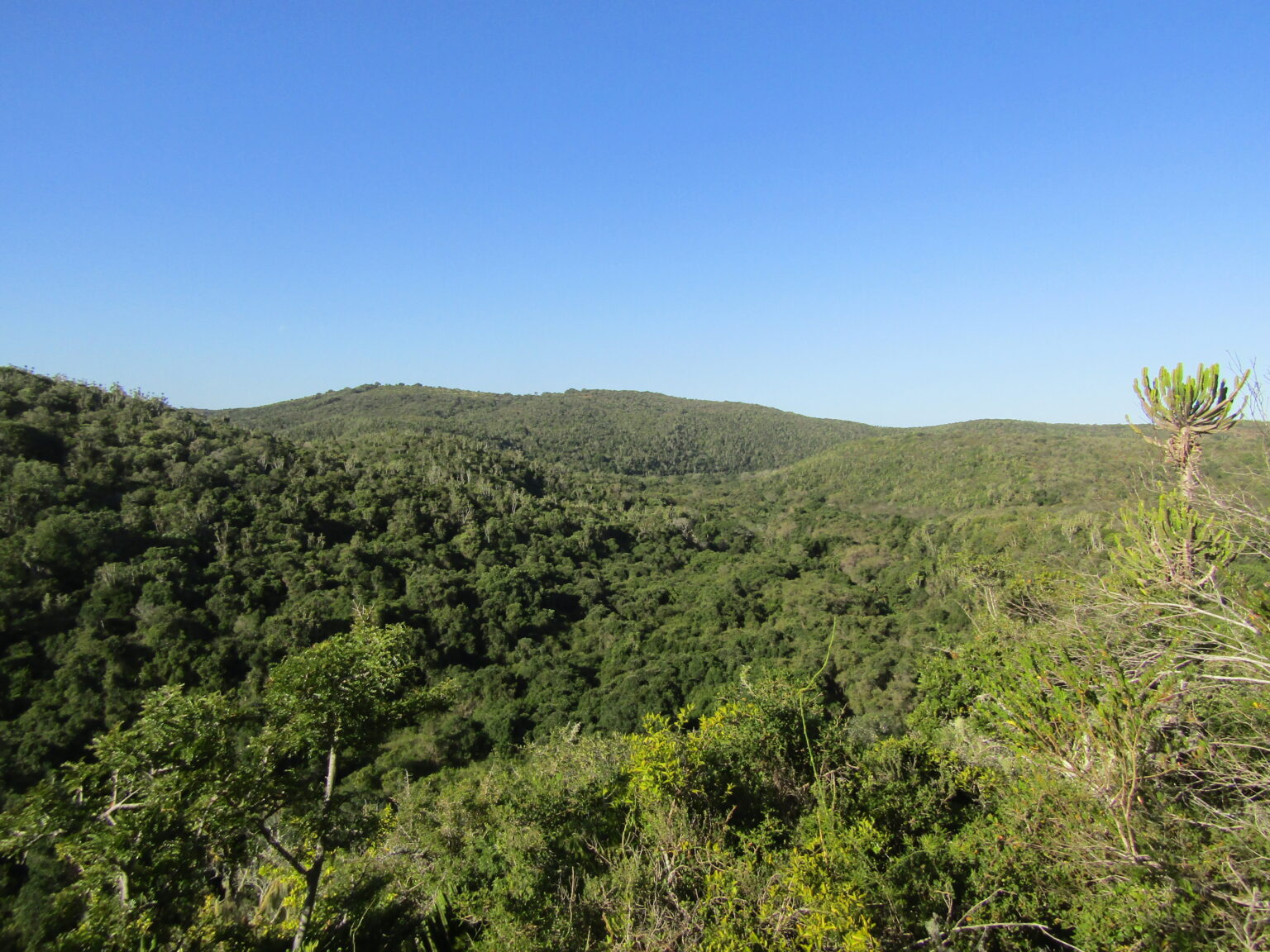By Marion Whitehead, Rhodes Restoration Research Group (RRRG)
A total of 1 209 ha of natural bush has been cleared for pineapple fields, cattle pastures, and sand mining between 2001 – 2021, putting the critically endangered river pipefish (Syngnathus watermeyeri) in danger of distinction, a new study by the Rhodes Restoration Research Group (RRRG) reveals.
In the catchment areas of the Kleinemonde Rivers north of Port Alfred, this rose sharply from 2013 onwards – and of the land cleared, 208 ha (17%) was cleared in the riparian buffer zones. The riparian buffer zones are meant to protect rivers from being polluted by runoff from fertilisers and pesticides used on cultivated fields and from becoming clogged with sediments that silt up river habitats and dams downstream and result in poor water quality for all living organisms – including the river pipefish.
This little cousin of the charismatic Knysna seahorse is one of the rarest animals in Africa and occurs only in five South African estuaries, all in the Ndlambe area. Declared provisionally extinct in 1994, the IUCN changed its status to critically endangered after the elusive pipefish was rediscovered in the Kariega estuary in 2006 after good rains boosted freshwater levels.
One of the homes of the pipefish is the estuaries of the Kleinemonde East and West rivers. The
rivers’ catchment area comprises the Subtropical Thicket biome, also known as Albany Thicket, and is at the heart of the very special Albany Centre of Plant Endemism, as well as being part of the World’s 34th Biodiversity Hotspot, the Maputaland-Pondoland-Albany Hotspot.
Large areas of this bush have been historically cleared. However, clearing activities are now encroaching closer to the rivers on steeper slopes within the protected buffer and riparian zones. This results in environmental degradation within the cleared areas and reduced water quality in the rivers and the downstream estuary.
“It is imperative that these areas that are protected by a range of South African laws and international treaties are not cleared,” says Nicholaus Huchzermeyer, lead author of the study. ”This is vital to avoid the fragmentation of natural ecosystem processes. The buffers are biodiversity corridors and contribute significantly to downstream and estuarine health.”
Buffer zones are legally required around streams, drainage lines, and wetlands or pans to limit the impact of one land use on another. In the Eastern Cape, regulatory buffers along drainage lines and streams are set at 32 metres from the sides of the banks, according to the Environmental Act, and 100 metres, according to the Water Act, and at 500 metres aroundwetlands and pans. Development within these areas triggers the need to conduct an Environmental Impact Assessment (in terms of the Environmental Act) and the need for a water use licence (in terms of the National Water Act). Following an environmental assessment, the size of the buffer is set by the EIA specialist to accommodate natural ecosystem processes.
Photo by Nicholaus Huchzermeyer.
Dr. Div de Villiers, Director of Enforcement with the Department of Economic Development,
Environmental Affairs and Tourism, says they have embarked on an awareness campaign with farmers to highlight the importance of Subtropical Thicket but land owners who do not comply will face the might of the law. Several farmers have been compelled to rehabilitate lands that they have cleared and some have been charged criminally.
Pipefish are sensitive to high levels of sedimentation, nutrient loading, pollution, and hypersaline conditions. These conditions are being created by catchment mismanagement and poorly planned land use. Huchzermeyer says land users in the catchment area who do not comply with environmental laws are possibly precipitating a species extinction.
“To maintain key river and estuarine habitats and species, it is vital to balance the effects of catchment development with the maintenance of intact natural habitats. This will contribute to the freshwater reserve and food sources needed for species such as the endangered river pipefish to survive into the future,” he says.
For more information on the Subtropical Thicket biome, see www.rrrg.co.za


